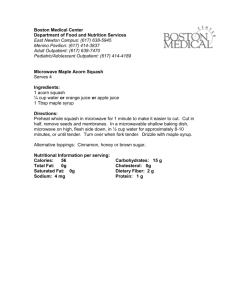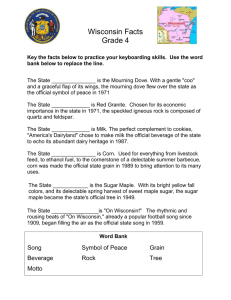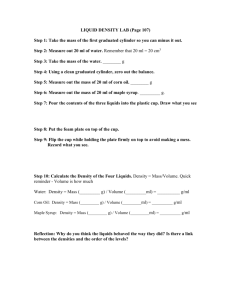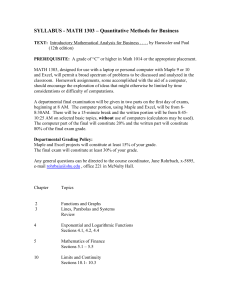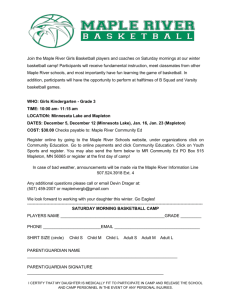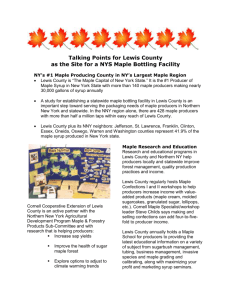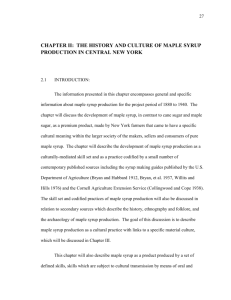Exercise caution when making Maple Confections
advertisement
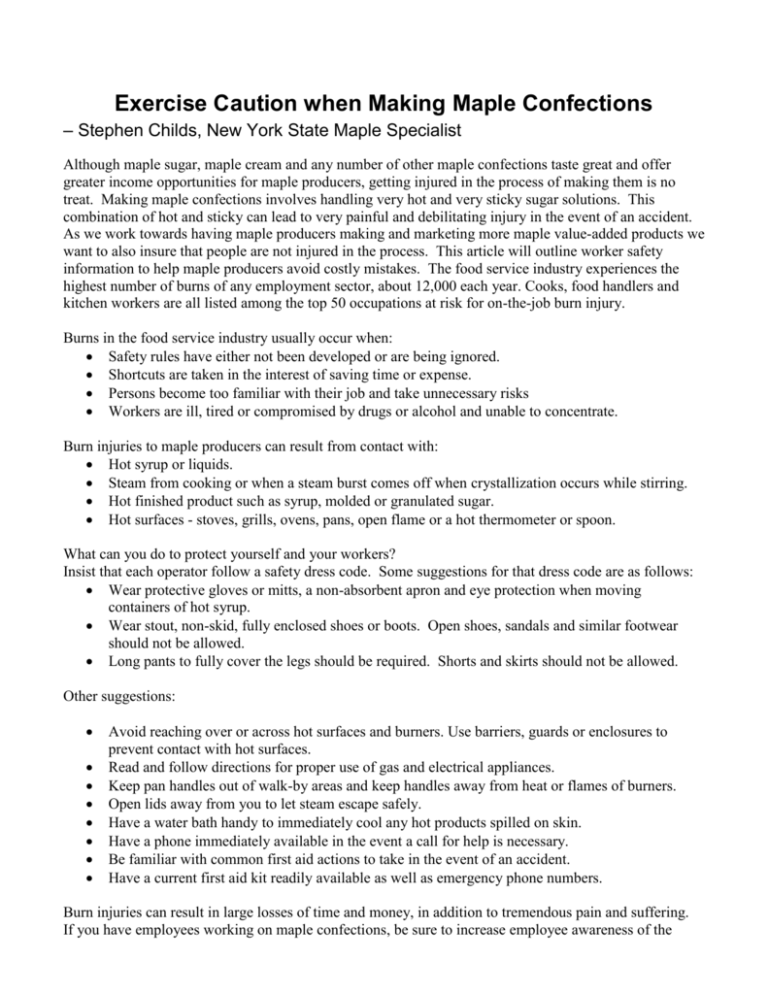
Exercise Caution when Making Maple Confections – Stephen Childs, New York State Maple Specialist Although maple sugar, maple cream and any number of other maple confections taste great and offer greater income opportunities for maple producers, getting injured in the process of making them is no treat. Making maple confections involves handling very hot and very sticky sugar solutions. This combination of hot and sticky can lead to very painful and debilitating injury in the event of an accident. As we work towards having maple producers making and marketing more maple value-added products we want to also insure that people are not injured in the process. This article will outline worker safety information to help maple producers avoid costly mistakes. The food service industry experiences the highest number of burns of any employment sector, about 12,000 each year. Cooks, food handlers and kitchen workers are all listed among the top 50 occupations at risk for on-the-job burn injury. Burns in the food service industry usually occur when: Safety rules have either not been developed or are being ignored. Shortcuts are taken in the interest of saving time or expense. Persons become too familiar with their job and take unnecessary risks Workers are ill, tired or compromised by drugs or alcohol and unable to concentrate. Burn injuries to maple producers can result from contact with: Hot syrup or liquids. Steam from cooking or when a steam burst comes off when crystallization occurs while stirring. Hot finished product such as syrup, molded or granulated sugar. Hot surfaces - stoves, grills, ovens, pans, open flame or a hot thermometer or spoon. What can you do to protect yourself and your workers? Insist that each operator follow a safety dress code. Some suggestions for that dress code are as follows: Wear protective gloves or mitts, a non-absorbent apron and eye protection when moving containers of hot syrup. Wear stout, non-skid, fully enclosed shoes or boots. Open shoes, sandals and similar footwear should not be allowed. Long pants to fully cover the legs should be required. Shorts and skirts should not be allowed. Other suggestions: Avoid reaching over or across hot surfaces and burners. Use barriers, guards or enclosures to prevent contact with hot surfaces. Read and follow directions for proper use of gas and electrical appliances. Keep pan handles out of walk-by areas and keep handles away from heat or flames of burners. Open lids away from you to let steam escape safely. Have a water bath handy to immediately cool any hot products spilled on skin. Have a phone immediately available in the event a call for help is necessary. Be familiar with common first aid actions to take in the event of an accident. Have a current first aid kit readily available as well as emergency phone numbers. Burn injuries can result in large losses of time and money, in addition to tremendous pain and suffering. If you have employees working on maple confections, be sure to increase employee awareness of the dangers through thorough orientation and ongoing safety training. Employers have the primary responsibility for protecting the safety and health of their workers. When using a mixer, blender or other power equipment in making maple confections please remember to follow these rules: Never put hand or any other inappropriate object other than food into the blender/mixer or power equipment. Unplug and turn off when not in use. No loose or floppy clothing or jewelry should be worn that has the potential to catch in any piece of equipment. Special care needs to be taken with apron strings. Make sure hair is tied back and out of the way. Burns and Scalds First Aid Whether the burn or scald is large or small, your first priority is to cool the burned area quickly by any convenient method. Immersion in cool water is ideal. The faster you remove the hot sugar and pull heat out of the affected area the better. This will limit injury and reduce pain. Additional treatment for the three specific types of burns is as follows: First-degree burn: In minor burns and scalds the skin goes red. Then apply a moist dressing, and bandage loosely Second-degree burn: If blisters form, the burn is more serious. Do not break the blisters - this will compound the injury by causing an open wound. Do not apply creams, ointments, or sprays. Seek medical attention. Third-degree burns: In the most severe burns, the skin may be burnt away. Some flesh will be charred. If many nerve endings are damaged, there may be little pain. Do not apply creams, ointments, or sprays. Call 911 for emergency service, call for a family member of friend who may be nearby for assistance. Wrap a clean sheet around the victim and, if the weather is cool, cover them with blankets to reduce the possibility of shock. The victim should be rushed to hospital because their life is at stake.

